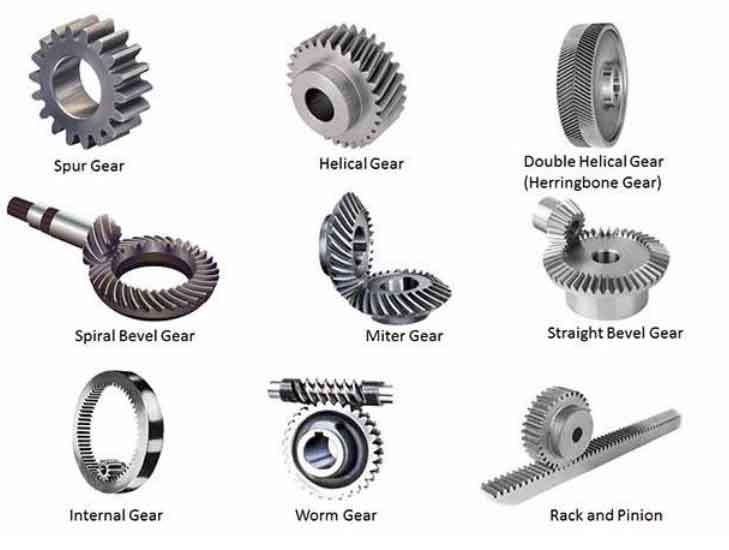Helical gears and herringbone gears are both popular types of gears used in various mechanical systems. While they serve similar purposes, there are some key differences between them. Let’s delve into a comparative analysis of these gear types:

- Tooth Structure:
- Helical Gears: The teeth of helical gears are cut at an angle to the gear axis, resulting in a helix shape. They have a gradual engagement and provide smooth operation with less noise compared to other gear types.
- Herringbone Gears: Herringbone gears, also known as double helical gears, have two sets of teeth that are cut in opposite directions, resembling the letter “V.” This design eliminates the axial thrust that occurs in helical gears, allowing for greater load capacity and eliminating the need for thrust bearings.
- Load Distribution:
- Helical Gears: The helical tooth design allows for gradual tooth engagement, resulting in a smooth transfer of load from one gear to another. They have a larger contact area, which helps distribute the load over multiple teeth, reducing wear and increasing their load-carrying capacity.
- Herringbone Gears: Herringbone gears provide even better load distribution than helical gears due to their double helix design. The opposing helices cancel out the axial thrust, which reduces the tendency of the gears to “walk” along the gear shafts.
- Noise and Vibration:
- Helical Gears: While helical gears generally operate more smoothly and quietly than other gear types, they still produce some axial thrust and noise due to the helix angle. The thrust requires additional measures, such as thrust bearings, to counteract it.
- Herringbone Gears: Herringbone gears offer improved noise and vibration characteristics compared to helical gears. The double helix cancels out the axial thrust, resulting in quieter operation and reduced vibration.
- Manufacturing Complexity:
- Helical Gears: Helical gears are relatively easier to manufacture compared to herringbone gears. The helical tooth profile can be produced using standard gear cutting methods, such as hobbing or shaping.
- Herringbone Gears: Herringbone gears are more complex to manufacture due to their double helix design. Specialized machinery and techniques are required to cut the opposing helical teeth accurately.
- Applications:
- Helical Gears: Helical gears are commonly used in various applications, including automotive transmissions, industrial machinery, and power generation systems. Their smooth operation and high load capacity make them suitable for a wide range of applications.
- Herringbone Gears: Herringbone gears find applications where high torque and smooth operation are essential. They are often used in heavy machinery, such as extruders, rolling mills, and marine propulsion systems, where the elimination of axial thrust is crucial.
In summary, both helical gears and herringbone gears have their advantages and are suitable for different applications. Helical gears provide smoother operation and are easier to manufacture, while herringbone gears offer improved load distribution, eliminate axial thrust, and reduce noise and vibration. The choice between the two depends on the specific requirements of the application, including load capacity, noise considerations, and manufacturing feasibility.
